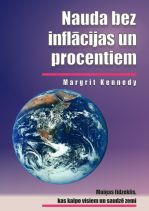Ziemeļdakota – štats ar savu banku
Autors egleskoks @ 4 jūnijs, 2009
Interesants rakstiņš par Ziemeļdakotas štata (North Dakota) banku un to, kā viņiem klājas krīzes laikā. Tur arī links uz interviju ar Ziemeļdakotas štata bankas prezidentu Ēriku Hārdmeijeru (Eric Hardmeyer).
Ziemeļdakota ir reti apdzīvots ASV ziemeļu štats ar apmēram 640 tūkstošiem iedzīvotāju (apmēram kā Rīgā), galvenā iedzīvotāju nodarbošanās ir lauksaimniecība, klimats vēss, teritorija 183 000 kvadrātkilometru. Tātad situācija līdzīga kā mums, daudzējādā ziņā.
Štatā kopš 2000. gada ir vērojama laba ekonomiskā izaugsme, un budžeta pārpalikums ir 1,2 miljardi dolāru. Kāpēc, kur ir šīs veiksmes pamats?
Kopš 1919. gada Ziemeļdakotai ir štatam piederoša banka, kura tika dibināta ar nolūku atvieglot fermeru un mazo biznesu dzīvi, izsniedzot kredītus par saprātīgu cenu un veicinot biznesu. Visu štata naudu iegulda šajā bankā, banka maksā dividendes štatam, un sadarbojas ar privātajām bankām. Noguldījumus garantē štats. Tādējādi, summas, ko parasti samaksā privātiem baņķieriem procentos, nonāk štata kasē, un bieži vien procentu maksājumi sastāda 50% no dažādu projektu izmaksām.
Varbūt arī Latvijas Bankai tiešāk jāpiedalās kreditēšanā, veidojot konkurenci ārvalstu bankām un piesaistot ieguldījumus no iedzīvotājiem?
Zemāk citāts no raksta:
North Dakota boasts the only state-owned bank in the nation. The Bank of North Dakota (BND) was established by the state legislature in 1919 specifically to free farmers and small businessmen from the clutches of out-of-state bankers and railroad men. The bank’s stated mission is to deliver sound financial services that promote agriculture, commerce and industry in North Dakota. By law, the state must deposit all its funds in the bank, which pays a competitive interest rate to the state treasurer. The state rather than the FDIC guarantees the bank’s deposits, which are plowed back into the state in the form of loans. The bank’s return on equity is about 25%, and it pays a hefty dividend to the state, which is expected to exceed $60 million this year. In the last decade, the BND has turned back a third of a trillion dollars to the state’s general fund, offsetting taxes. The former president of the BND is now the state’s governor.
The BND avoids rivalry with private banks by partnering with them. Most lending is originated by a local bank. The BND then comes in to participate in the loan, share risk, and buy down the interest rate. The BND provides a secondary market for real estate loans, which it buys from local banks. Its residential loan portfolio is now $500 billion to $600 billion. Guarantees are also provided for entrepreneurial startups, and the BND has ample money to lend to students (over 184,000 outstanding loans). It purchases municipal bonds from public institutions, and it backs loans made to new farmers at 1% interest. The BND also has a well-funded disaster loan program, which helps explain how Fargo, when struck by a disastrous flood recently, managed to avoid the devastation suffered by New Orleans in similar circumstances.
North Dakota has also managed to avoid the credit freeze, through the simple expedient of creating its own credit. It has led the nation in establishing state economic sovereignty. In California and other states, workers and factories are sitting idle because the private credit system has failed. An injection of new money from a system of publicly-owned banks on the model of the Bank of North Dakota could thaw the credit freeze and bring spring to the markets once again.

